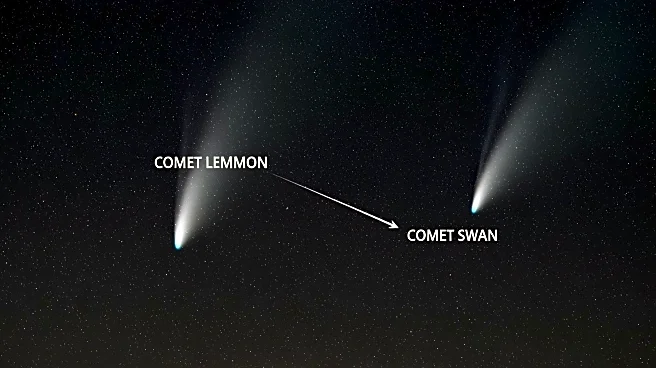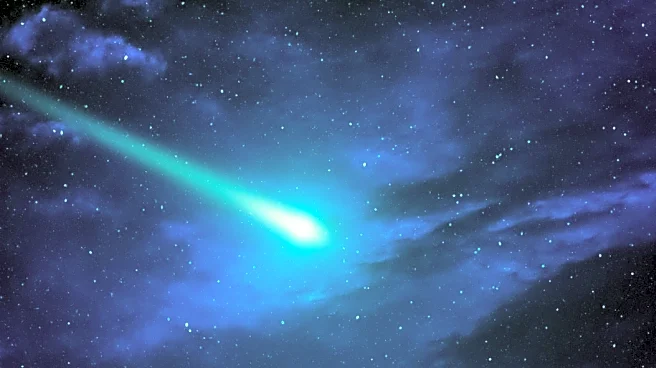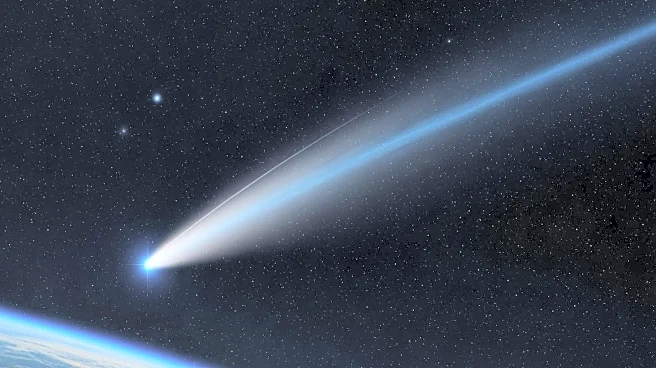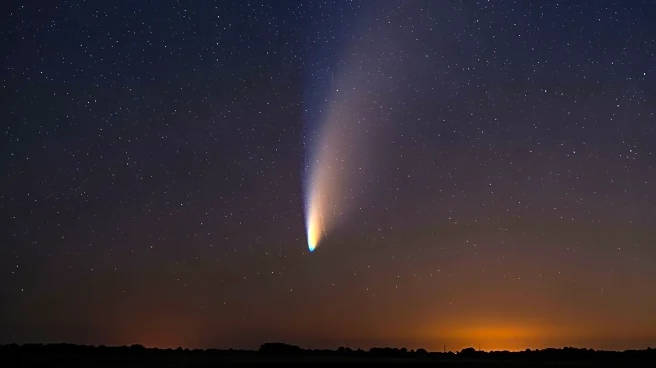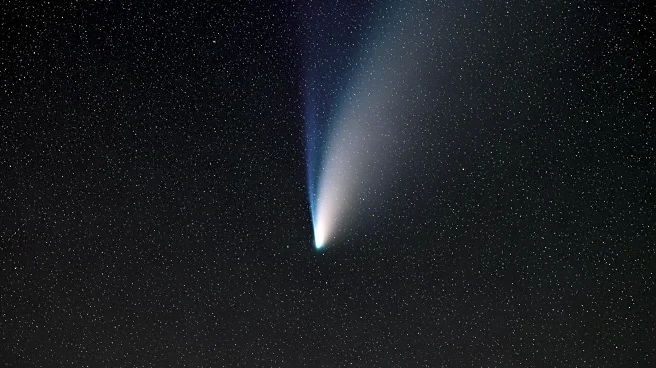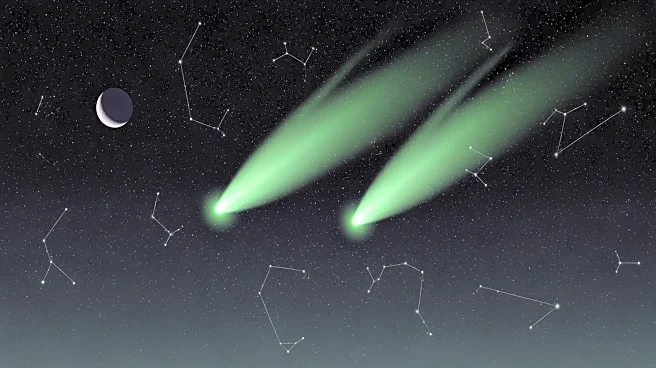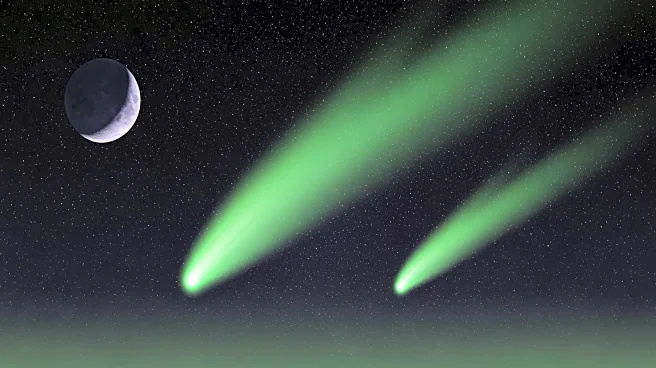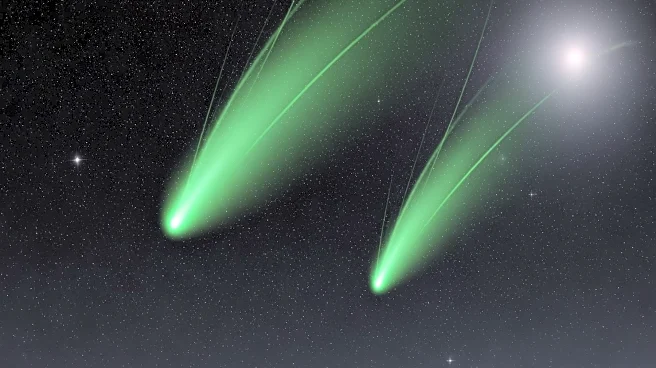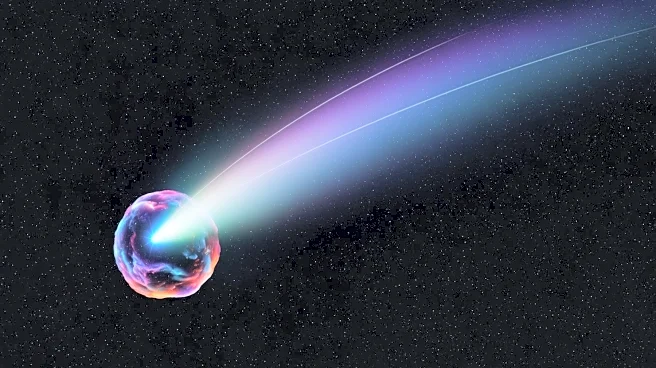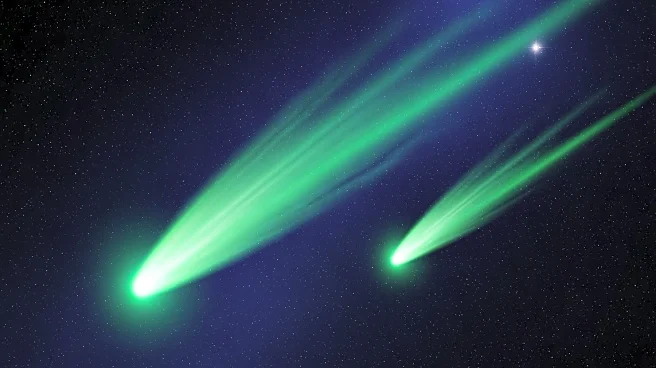What's Happening?
Comet C/2025 A6 (Lemmon) and Comet C/2025 R2 (SWAN) are set to reach their closest points to Earth this week, providing a unique opportunity for skywatchers. Comet Lemmon will be at its brightest on October
21, while Comet SWAN will reach its peak visibility a day earlier on October 20. Comet Lemmon, with a magnitude of 4.5, will be visible to the naked eye under very dark skies, whereas Comet SWAN, with a magnitude of 5.9, will require binoculars for viewing. The best time to observe these comets is about an hour and a half after sunset. Comet Lemmon will be visible in the northwest sky near the Big Dipper and Arcturus, while Comet SWAN can be found in the southwest, near the Summer Triangle of stars.
Why It's Important?
This celestial event is significant as it offers a rare chance to observe two comets in close succession, a phenomenon not commonly visible without specialized equipment. The appearance of these comets could spark increased interest in astronomy and space observation among the public. For scientists, these comets provide an opportunity to study the composition and behavior of such celestial bodies as they pass close to Earth. The event also highlights the dynamic nature of our solar system and the ongoing interactions between celestial bodies.
What's Next?
As Comet Lemmon continues its journey, it will loop around the sun on November 8, completing its 1,350-year orbit. The gravitational influence of Jupiter has altered its trajectory, shortening its orbital period by nearly 200 years, meaning it will not return until the year 3179. Meanwhile, Comet SWAN will continue its path, offering further opportunities for observation and study. Skywatchers and astronomers will likely continue to monitor these comets, capturing images and data to enhance our understanding of such phenomena.
